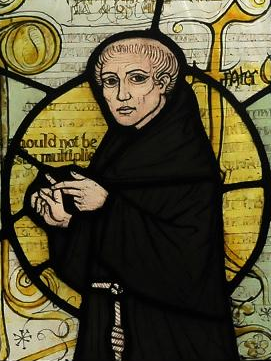Sam Alma at Aeon Magazine:
 You are standing on a boat that is drifting down a placid river. You watch the trees on the shore glide along. For a moment, it looks like the trees themselves are moving – not your boat. But this, of course, is mere appearance: the trees are still, and it is your boat that moves. This parallax effect was described by medieval philosophers, but it may be more familiar in another form: when you’re sitting on a train slowly rolling out of the station, it can seem like it is the stationary train next to yours that is departing instead.
You are standing on a boat that is drifting down a placid river. You watch the trees on the shore glide along. For a moment, it looks like the trees themselves are moving – not your boat. But this, of course, is mere appearance: the trees are still, and it is your boat that moves. This parallax effect was described by medieval philosophers, but it may be more familiar in another form: when you’re sitting on a train slowly rolling out of the station, it can seem like it is the stationary train next to yours that is departing instead.
A handful of 14th-century scholastic thinkers wondered how this parallax effect came about. What explains our perceptual error? Let’s call this the problem of erring. In finding a solution, the medieval philosophers had to take into account another observation: nonhuman animals err too. According to scholastic orthodoxy, human and nonhuman animals were alike in being animals. Even so, within this category, humans occupied a special place: they are the only type of animal that is endowed with an intellect, a rational soul. They are, in medieval parlance, rational animals.
more here.
